This time I will bring you an interesting comparison, which you can tell by just looking at the photo. At first sight, it may seem as if I’m comparing two stereo sound speakers and I might catch you on planning a movie night. Before you set up a date with your remote control, try reading a few lines below. I promise you won’t regret it.
Coming from an extremely popular brand, Xiaomi Mi 3H promises to clean up to 99,97% of pollutants in your living space leaving the air instantly clean. And the best thing is that you can comfortably rest in front of your TV with a Xiaomi Smart app at a glance, to control your air purifier without making a single step.
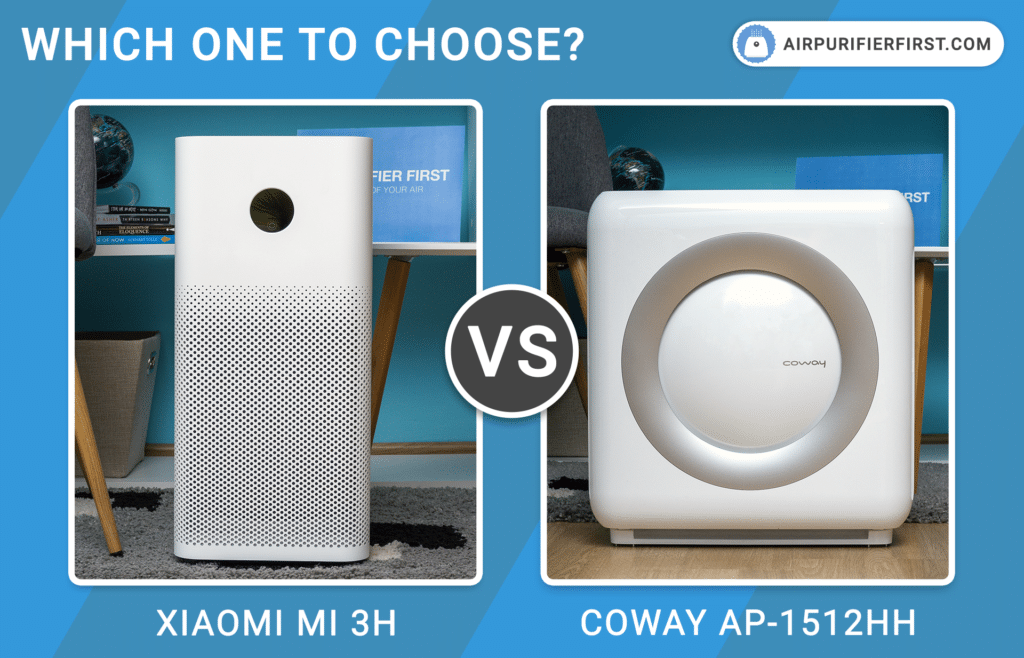
Table of Contents
Another globally recognizable brand Coway is here to show off with its purifying beast Coway AP-1512HH, or shortly Coway Mighty, and to justify multiple rewards collected.
Let me take you step-by-step and demonstrate why it has been a real struggle between these two provenly good appliances.
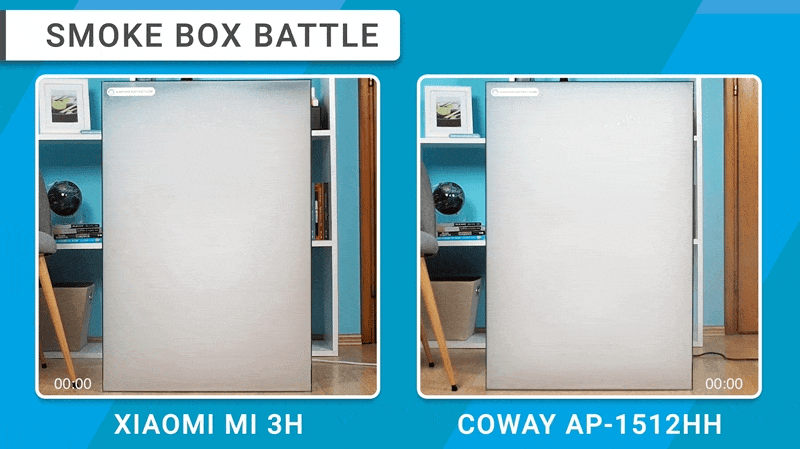
- Xiaomi Mi 3H – is a medium-size air purifier that covers rooms up to 484 sq. ft. It uses a three-filtration technology, is compatible with Mi Home smart app, and has an air quality sensor.
- Coway AP-1512HH – is a medium-sized air purifier that covers rooms up to 361 sq. ft. It has an air quality sensor and auto mode and is generally more powerful and equipped with more features than its opponent.
*If you click any of these links and make a purchase, we earn a commission at no additional cost to you.
Xiaomi Mi 3H Vs Coway AP-1512Hh Specifications
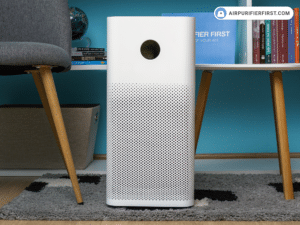 |
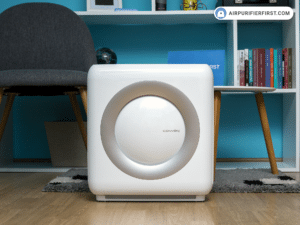 |
|
| Manufacturer | Xiaomi | Coway |
| Model | Mi 3H | AP-1512HH |
| Dimensions | 9.45 x 9.45 x 20.47 inch | 16.81 x 9.65 x 18.30 inches |
| Weight | 11 lb | 12.76 lb |
| CADR | 380 m³/h | Smoke 233, Dust 246, Pollen 240 |
| Coverage | 484 sq. ft. | 361 sq. ft. |
| Filters | Pre-filter, Deodorization Filter and True HEPA Filter | Pre-filter, True HEPA Filter and Activated Carbon Filter |
| Filter Reset Indicator | ||
| Filter Longevity | 6-12 months | up to 12 months |
| Power Consumption | 38W | 77W |
| Smart Sensor | ||
| Auto Mode | ||
| Air Quality Indicator | ||
| Child Lock | ||
| Ionizer | ||
| Warranty | 1-year | 3-year |
| In-Depth Review | Xiaomi Mi 3H | Coway AP-1512HH |
| Price | Check Price on Amazon | Check Price on Amazon |
Xiaomi Vs Coway Features
One thing is for sure. For air purifiers like Xiaomi Mi 3H and Coway AP-1512HH, it is almost impossible to leave it with only basic options.

Therefore, it is no surprise that out of the many advanced options each of these appliances owns, a lot of them are in common. For instance, one of the valuable ones is definitely the Filter Reset Indicator. Just in case you forget the time when the filter needs to be replaced, the Indicator will remind you and your wallet, by the way.
Also, options like a smart sensor, auto mode, and air quality Indicator are just additional examples.
Air Quality Sensor
This is the part where a true battle takes place. It’s the Air Quality Sensor that both appliances have, which is supposed to detect dust particles in the air.
With Coway Mighty you get to set this sensor in 3 levels, from sensitive, to standard, to insensitive, depending on what kind of ambiance you want to create. Pay attention to the Air Quality Indicator, which will let you know the current quality of the surrounding air.
As opposed to Coway, Xiaomi Mi 3H shows more data, such as PM 2.5 particles. You can see it on the display of the air purifier, right next to the Air quality indicator.
I noticed after long-term usage that Coway definitely has a more precise sensor than Xiaomi and with high-end quality. I find that feature very important.
Auto Mode
This is the option where both Xiaomi Mi 3H and Coway AP-1512HH unite. Based on the information that the Air Quality Indicator sends on whether and how clean the air is, the air purifier will be sped up or slowed down once it is in the Auto Mode.
An extra feature that Coway Mighty can use to brag about is the ECO mode. The ECO mode constantly controls the air quality and if the air is clean enough for about half an hour, it will switch to standby mode. But, even then the ECO feature keeps working in the background, and if the air alarms “pollution” the Coway Mighty gets back on track.
Smart App
Being the brand as it is, of course having a Smart App is something you’d expect from Xiaomi. Like in many other products, Xiaomi has developed a ”Mi Home” smart app that is common for all the appliances that have been put on the market. It’s basically the universal application that will make it easier for you to control your gadget/appliance, by unlocking the newest features that can be applied.
If you want to know more about the Xiaomi app itself and how you can connect Alexa or your Google assistant, go and check out my full Xiaomi Mi 3H in-depth review.
Even though it is Mighty, Coway still hasn’t developed an app that can be complemented with the appliance. But that doesn’t make it any less competitive.
Timer
While you can’t set the timer directly on the Xiaomi Mi 3H, you can still use the app which gives endless opportunities to control your device, by setting the exact time you want the purifier to turn ON/OFF. Coway Mighty does this in a more habitual procedure, by setting it to 1h, 4h, or 8h before it shuts down.
Sleep Mode
First, let me say it’s a shame that Coway, as Mighty as it is, does not come with a feature like this. Still, there’s a catch. There is always a catch, right? If you hold the Ionizer button for about 3 seconds and you set the Speed 1, it will give you the same effect as if your purifier had a Sleep Mode.
Meanwhile, Xiaomi Mi 3H uses this option in a pretty simple way. Once the appliance is set to Sleep Mode, the speed will decrease to minimal, and the lights on the display will be dimmed, so you can fall asleep in no time without being distracted.
Airflow
There’s a slight difference between Xiaomi Mi 3H and Coway AP1512HH regarding how their filters are positioned.
Coway has its filter placed frontally, sucking the air through the holes, filtrating it, and releasing it through the upper openings. Xiaomi’s filter takes up about two-thirds of the appliance and it is placed on the bottom. All of its sides are used to draw in the air, except the rear one where the lid is. The air is being filtered and released through the upper side of the air purifier.
Warranty
Maybe you’re the kind of customer that expects all of his appliances to work eternally, once they’re bought. But hey, sometimes it’s not about how long they last, it’s about how well they serve us.
This is the thing where Coway is in advantage by giving you a 3-year warranty for the Mighty one, while Xiaomi offers only 1 year. To me, it only points out how seriously the Coway company takes its customers.
Xiaomi Mi 3H Vs Coway AP-1512HH – Video Comparison
Filtration Technology
At this point, it is quite obvious that Xiaomi and Coway are pretty equal and a 3:4 ratio, when counting stages of filtration, proves it. Both air purifiers have a pre-filter, True HEPA filter, and a Carbon filter respectively, while Coway adds an extra stage with its Ionizer.
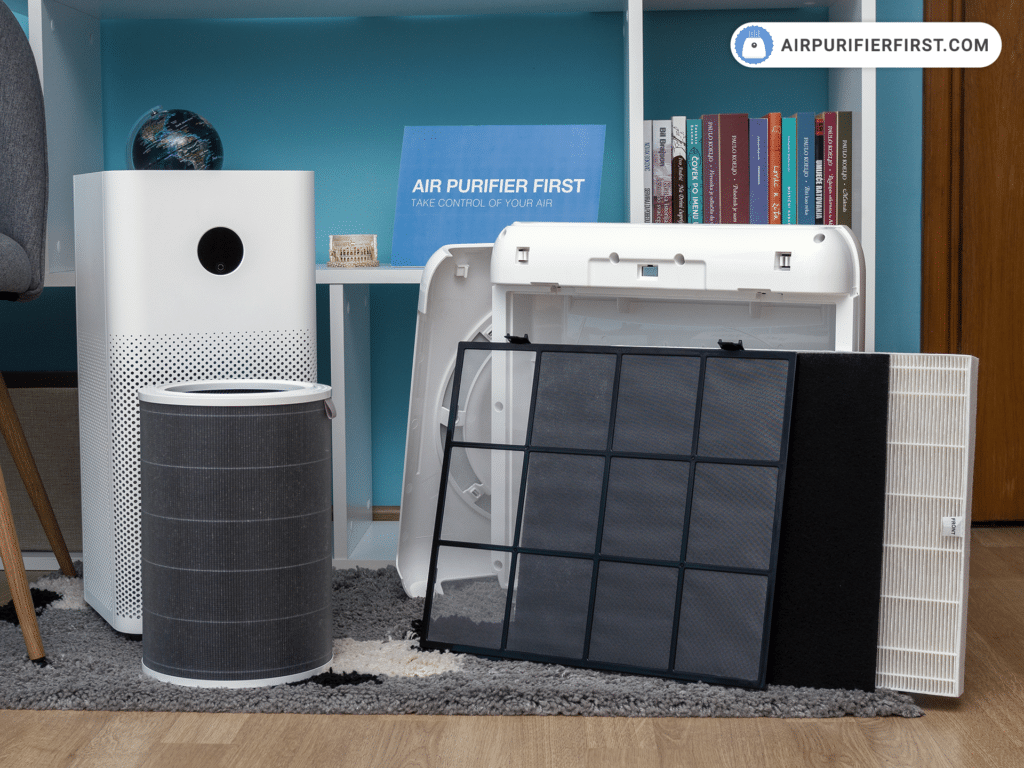
Considering the different shapes of Xiaomi Mi 3H and Coway AP-512HH it is a bit hard to measure and compare the size of filters in these appliances. I’ll give myself the freedom to state that the sizes of filters are pretty much the same.
There are three things I would like to point out about Coway Mighty.
First, if you want your air purifier to last long, you have to wash its pre-filter at least once a month. Second, the Ionizer button is not ON by default, so once you need it, just turn it ON. And last, but not least, Coway comes with a CARB certificate, which means it produces ozone within legal boundaries.
How To Replace Filter On Both These Devices
When it comes to the endurance of every single air purifier, I always remind myself to clean the pre-filter at least once a month. The same advice I am giving to you.
In this case, with Coway Mighty you get the chance to wash the pre-filter, while Xiaomi does not have that option. Not to mention that replacing the filter costs way more as opposed to Coway, and you’d have to do it more often. At least once or twice a year.
Noise Tests
Having three speeds is another feature that both Xiaomi Mi 3H and Coway AP-1512HH have in common. As I already mentioned, Xiaomi also offers you the Sleep Mode and you’ll be surprised by how silent and pleasant this air purifier can be. And if you’re a bit more gadget-prone, you can also use the Smart app to control the air purifier and set the speed to a desirable level.
| Product | Noise Range (dBA) |
|---|---|
| Xiaomi Mi 3H | 40.9 – 65.4 dBA |
| Coway AP-1512HH Mighty | 41.4 – 63.5 dBA |
There is one tricky thing with both of these air purifiers.
Even though every purifier gives the best airflow and top results while working at a maximum speed, these two tend to be quite noisy when working at the highest speed level. It can be pretty annoying and one of you two will have to leave the room. My guess is it won’t be the air purifier, right?
Performance Tests
Based on the specifications, you’ll see that Xiaomi Mi 3H is designed for 484 sq. ft. and Coway Mighty for up to 361 sq. ft. space. I thought it would be easier to compare performances if I tested both appliances in a 320 sq. ft. room. And I wasn’t wrong.
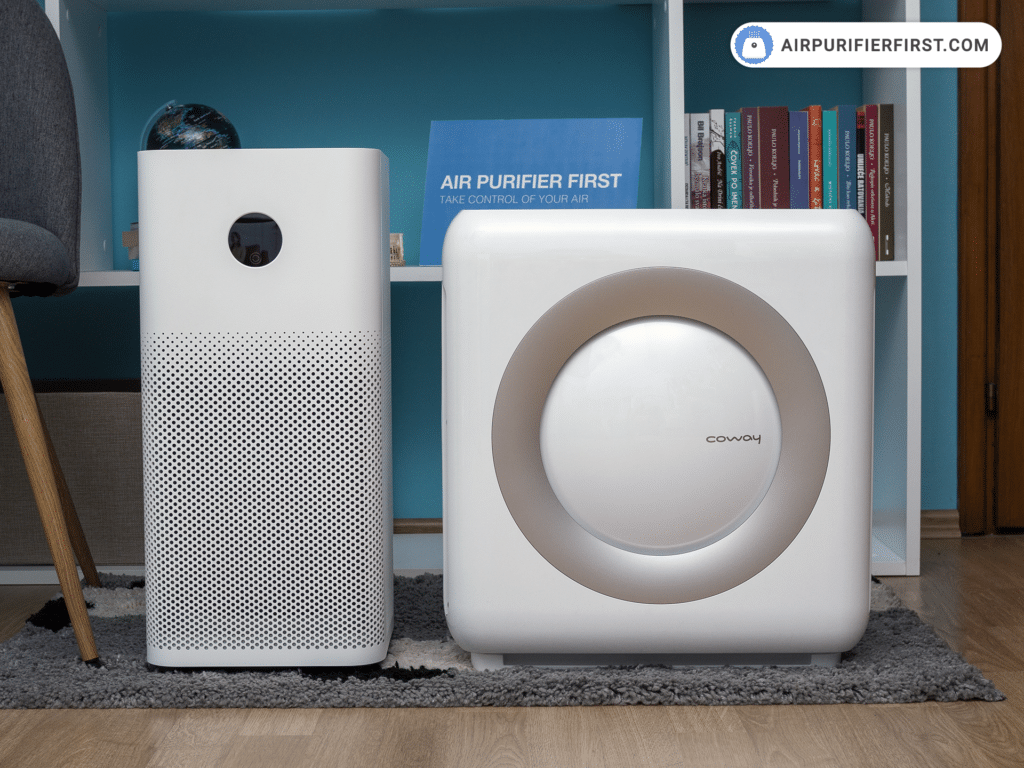
320 sq. ft. Room Tests
Here is what I did. I turned each appliance ON and set it to a maximum speed level, leaving it like that for an hour. By the end of the test, Xiaomi Mi 3H had resulted in 95% cleaner air, while Coway Mighty was slightly better with 96%.
320 sq. ft. Room
* Data measuring time is 60 minutes.
I find that both air purifiers showed fantastic performances. These results are definitely worthy of praise, especially long-term speaking.
Operating Costs
So, we’ve come to an interesting part where some of the data I’ll be giving to you might get you confused.
On one side you have a Xiaomi Mi 3H with a 33W motor, while on the other side Coway Mighty has a mighty 77W motor. If you leave them working 24/7 at a maximum speed for a whole month, you would be given a 3.4$ bill for Xiaomi’s usage and a 6$ bill for Coway Mighty.
| Product | Wattage Range (W) |
|---|---|
| Xiaomi Mi 3H | 0.9 – 39W |
| Coway AP-1512HH Mighty | 0.2 – 69.1W |
When it comes to money, don’t we all rush into buying something just because we find it cheaper than something else? Well, take your time.
If you’ve read the part about filters for both of the appliances, then you’re already familiar with the potential costs it might cause you. Given the fact that new filters for Xiaomi are more expensive and that you would need to replace them more often as opposed to Coway, it brings us to the conclusion that Coway is a bit more affordable and easier to maintain, even only annually speaking.
Which One Does It Better?
I wish I could cut the long story short, but it wouldn’t be fair to any of these air purifiers. Numerous tests have shown just how competitive they are.
On the other hand, you get a recognizable brand such as Xiaomi and you expect its air purifier to be the best version, but it gets beaten by the Coway Mighty. That is exactly why I consider Coway to be the better choice.
There are so many features that work in favor of this air purifier. Starting from being well manufactured, having air quality sensors, outstanding performance in general, but also sometimes determining the fact that it is a bit cheaper to maintain than Xiaomi.
Even though I find Coway Mighty to be the better choice, I still think Xiaomi is worth buying, not only for the brand but primarily for its efficiency.
Leave a Reply